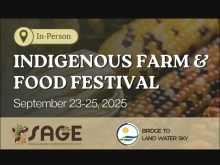Wild animals in Canada have always relied on snow as their primary water source during the winter. It has been shown that some wild species, such as reindeer, prefer snow if given a choice.
Can ruminants, especially pregnant beef and bison cows and heifers, do well eating snow? I have many clients that go to elaborate lengths to make sure their cattle have access to water during the winter. Others use snow and the animals do well. This article will provide facts on the matter and evaluate common winter watering practices.
Read Also

Finding the sweet spot where ag science meets ag culture
Soon, many will look at practices such as seeding marginal acres to forage, growing cover crops and livestock integration and ask why they didn’t do this sooner.
Studies in Alberta and Montana have consistently found that when animals were fed snow, there was no change in calves’ birth and weaning weights and cows’ body fat, fertility and days till rebreeding.
These results confirm that feeding mature large ruminants such as cattle, bison and elk can be an acceptable practice, unless there is inadequate snow or the snow is crusted over by rain.
More water is necessary during calving and in late pregnancy in order to produce good quality colostrum and milk, but cattle are generally brought in closer to the yard for calving and access to water is readily available.
The rest of the time snow consumption will not harm mature cattle.
Fresh snow is clean and has no fecal contamination, but producers must monitor body condition because lack of water or snow will reduce feed consumption and cause condition scores to drop rapidly.
Gauntness in the flanks is the first sign, followed by weight loss over the ribs and spine. Watch the consistency of the manure because less water
results in dry and stiff cow patties.
Eating snow is a learned behaviour so animals that are new to the concept may take up to three days to adjust. Keep in mind that water requirements will drop during the winter as temperatures decline.
I use an average rule of 10 percent body weight in summer, or about 41Ú2 litres per 100 pounds, which drops to two-thirds or less during the winter.
Water requirements have also dropped over the years as silage feeding became more common because silage has a moisture content of 50 to 60 percent.
Feeding snow can also improve a farm’s management practices and reduce costs. It allows producers to use stockpiled pastures and remote and protected wintering areas. They can save electricity costs by not having to heat watering bowls and run pumping systems. They don’t have to spend money trenching in lines and buying all-weather watering systems.
By moving the feeding area, producers can spread out manure and eliminate the need for its removal. Calving yards can also be kept clean until needed.
In a drought, feeding snow relieves some of the pressure placed on overworked dugouts and wells. It also makes it unnecessary for producers to cut holes in the ice, which can result in drowned cattle that fall through and contaminated water from a large
in the spring.
A few years ago I saw an aerial photograph of cattle being watered through a hole in the ice on the Red Deer River in Alberta. Environmental groups could have a heyday with all that manure on the ice and the thought of communities downstream getting their drinking water from the river.
Eating snow on vast expanses of land gets away from these types of environmental concerns.
It was once thought the extra energy a cow would need to melt snow could decrease feed efficiency, but it is now known that heat created in the rumen during digestion easily melts the snow.
As well, livestock that must walk a long way to a thawed water source also consume extra energy.
Roy Lewis is a veterinarian practising in Westlock, Alta.














